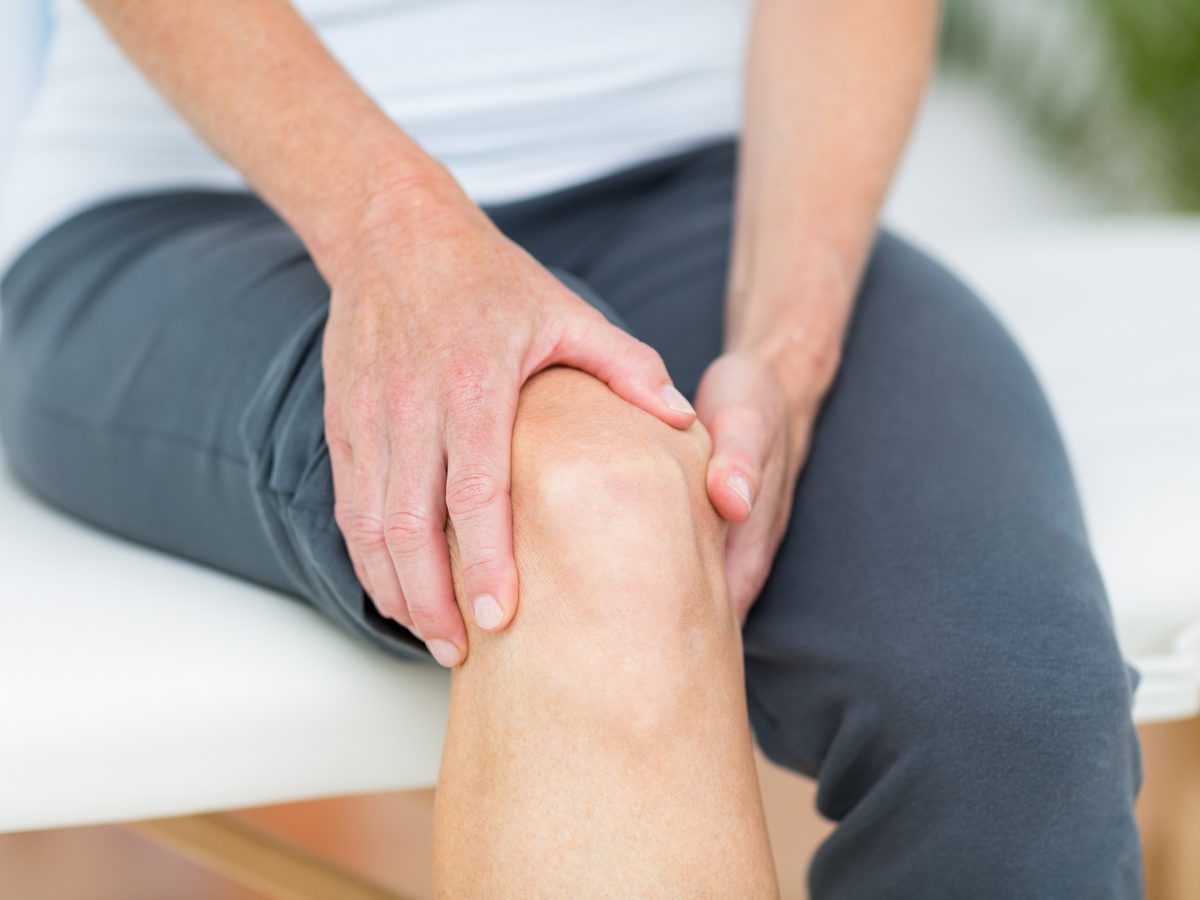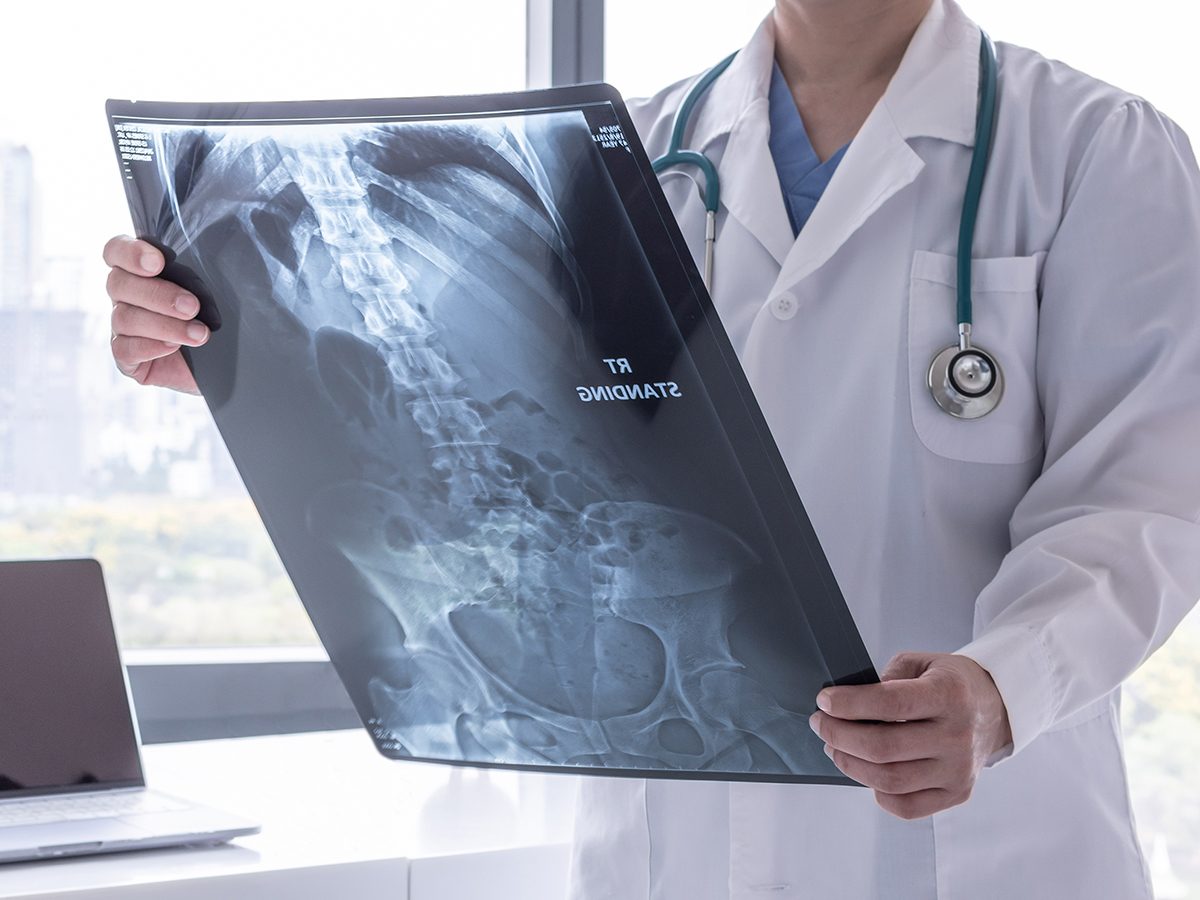
What’s Wrong with Me?
The patient: Elizabeth Hitchens, 30, a volunteer with rescue animals
The symptoms: Sore, joint pain and absence of bowel movements
The doctor: Dr. Pankaj “Jay” Pasricha, director of the Johns Hopkins Center for Neurogastroenterology in Baltimore, Md.
Elizabeth Hitchens, a petite woman, has always enjoyed physical activity—even competing at the Special Olympics (Hitchens, adopted at age five, has fetal alcohol spectrum disorder.) In January of 2017, however, her ankles, knees, wrists and other joints suddenly began hurting. “It was throbbing, stabbing, shooting pain,” says Hitchens, who lives with her parents in Poolesville, Md.
A rheumatologist ran blood tests and X-rays, but failed to find any definitive reason for her pain. The specialist did note, however, that Hitchens’s joints had become extremely flexible. Her thumb, for instance, could be pulled down to touch her forearm.
A month after the onset of these symptoms, the mystery deepened. Hitchens, whose bathroom habits were normally regular, realized she hadn’t had a bowel movement in two weeks. She mentioned it to her mom, Janet. “I picked my jaw up off the floor and immediately took her to an emergency room,” Janet says.
Here’s what your bowel movements can teach you about your health.

Making a Diagnosis
An abdominal X-ray showed her stool wasn’t moving. Hitchens was given a laxative and an enema. Neither produced results. She was sent to see a gastroenterologist, who suggested a barium enema. Although that test, which uses a liquid mixed with barium to produce a clear X-ray image of the colon, triggered a bowel movement—her first in weeks—it didn’t provide answers.
Finally, a procedure called a gastric emptying study supplied a clue. Hitchens ate food mixed with radioactive material, and a series of X-rays showed that almost half the meal was still in her stomach several hours later. This explained why she wasn’t having bowel movements, but didn’t clarify why both her digestive system and her joints had undergone changes at the same time.
It’s challenging when symptoms fall under different medical specialties. “Doctors are all in their own little domains,” says Janet. This realization impelled her to approach Johns Hopkins, a teaching hospital that might have a more collaborative approach.
Amazingly, the first doctor Hitchens described her symptoms to said it sounded like something her colleague, Dr. Jay Pasricha, was researching. Pasricha is co-director of the hospital’s Amos Food, Body and Mind Center. “We see patients from all over the world who have typically seen five or six specialists before they come to us,” he says.
As it happens, an association between flexible joints and gastrointestinal symptoms had been identified in a few medical journals as early as 2004—along with autonomic dysfunction (for example, feeling dizzy when standing up). “But many physicians don’t know about the connection,” Pasricha says. “There’s no intuitive biological link.”
By 2015, Pasricha and his colleagues realized that some of their patients had a fourth attribute. Besides JAG (joint hypermobility, autonomic dysfunction and gastrointestinal dysmotility), a handful of them also had signs of autoimmune disease. “We started calling it JAG-A, yet to be fully understood.” Thus far, Pasricha’s team has analyzed data from over 100 people with symptoms in all four areas.
“Elizabeth was almost a poster child for JAG-A,” Pasricha recalls. Along with her gut and joint symptoms, a tilt table test found that she didn’t respond normally to becoming upright from a lying-down position, and blood tests showed immune system abnormalities.
The cause of the condition is uncertain, although Pasricha’s team has wondered if these patients share a genetic predisposition. They began treating many of those affected with intravenous immunoglobulin (IVIG), in which antibodies from donated blood are slowly infused through a vein in the arm. “It’s not a magic bullet. We’ve had a few patients who did not respond,” says Pasricha.
Look out for these health symptoms you should never ignore.

A Successful Treatment
By the time Hitchens started the treatment, in January 2018, she was eating only liquids, had lost weight and was hospitalized for malnutrition. After a promising beginning—a bowel movement after the first infusions—she had an unusual reaction during the second set a month later. Try as she might, she couldn’t stop moving her arms and legs. The session was cut short but the next month the reaction returned and was even more intense, with Hitchens feeling compelled to march back and forth endlessly until the effect subsided about four hours later. It was unbearable. “I was devastated. This medication had held such promise,” says her mom.
But rather than give up, the team decided to try a different manufacturer of the immunoglobulin, at the suggestion of co-director Dr. Glenn Treisman. “There are differences in what else is added to the formulation that may result in less or more tolerance,” Pasricha explains.
To everyone’s relief, the side effect didn’t return. A year later, Hitchens is on a scheduled regimen of infusions and is having bowel movements again, albeit sporadic. Her joints continue to bother her and her energy is low, but Pasricha’s team still treats and monitors her. She’s not cured. But with more testing and study of patients like Hitchens, Pasricha and his colleagues hope to broaden their understanding of JAG-A.
In the meantime, Hitchens looks forward to the day when she’s recovered enough to return to her volunteer job, taking care of rescued farm animals at a sanctuary. “I’d love to live and work on a ranch,” she says. “That’s my dream.”
Next, find out how doctors discovered this woman’s stomach was on the wrong side.